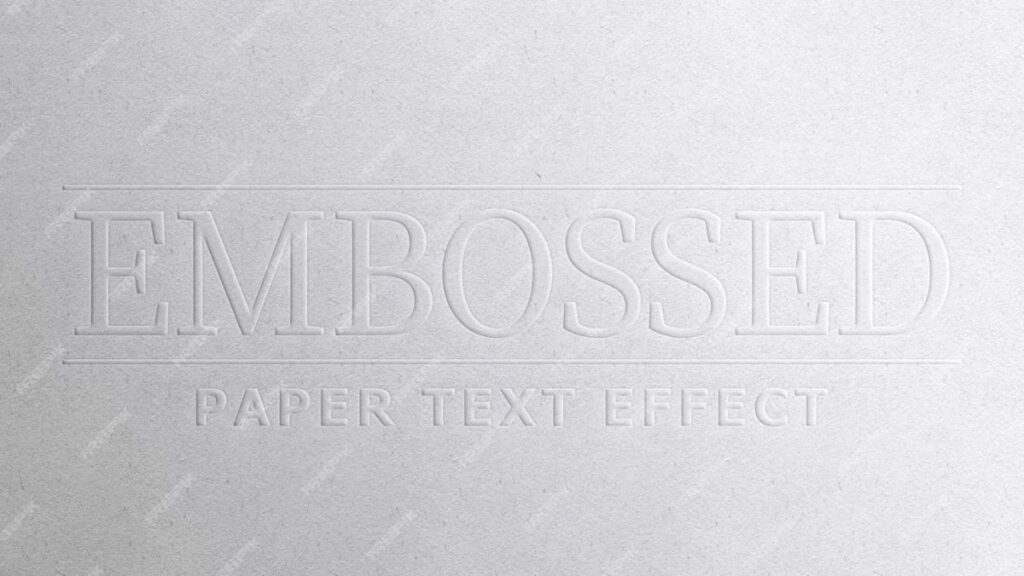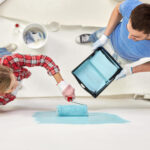What is an Embossed Name?
An embossed name refers to a text that is raised above the surface of a material, creating a three-dimensional effect. It gives an elegant and professional touch to any object it adorns, such as business cards, invitations, stationery, and leather goods. Embossing a name adds sophistication, depth, and texture, enhancing its visual appeal.
Unlike printing, where the ink sits on the surface, embossing physically alters the material to create a tactile experience. The popularity of embossed names in design, corporate branding, and luxury products has soared because it conveys prestige and quality.
Why Choose an Embossed Name?
Choosing to emboss a name is not just about aesthetics; it’s about making a statement. An embossed name creates an unforgettable first impression. Whether it’s a company logo, a personal monogram, or a custom gift, embossing elevates the perceived value of the item.
An embossed name feels premium, indicating attention to detail and commitment to excellence. In marketing, perception is crucial, and tactile elements like embossing foster emotional engagement. Simply put, people are drawn to things that feel good in their hands.
Popular Materials for Embossing Names
Embossing can be done on a variety of materials, and each offers a unique look and feel.
- Paper: Business cards, invitations, and certificates often feature embossed names to showcase class and professionalism.
- Leather: Wallets, journals, and bags with embossed names become personalized, luxury items that people cherish.
- Metal: Some high-end nameplates and jewelry use embossing to achieve a rugged yet refined finish.
- Plastic and Acrylic: Corporate products, promotional gifts, and name badges are often embossed for durability and style.
Choosing the right material is vital because it impacts the visibility, feel, and longevity of the embossed name.
Techniques for Creating an Embossed Name
Different embossing techniques cater to different needs and aesthetics.
- Blind Embossing: No ink or foil is used, letting the raised surface create a subtle yet striking effect.
- Registered Embossing: Aligns the embossed area with a printed design, enhancing logos or name art.
- Combination Embossing: Uses both embossing and foil stamping to create a luxurious finish, often seen in premium branding.
- Sculpted Embossing: Creates a multi-level, more detailed 3D effect, ideal for intricate logos or ornate names.
Each technique offers its own charm, and selecting the appropriate method depends on the brand image and desired impact.
If you want to read more, visit our blog page. We have more topics!
The Process Behind Embossing a Name
Embossing a name involves precision and craftsmanship. It typically follows a structured process:
- Design Preparation: A custom die is created based on the name’s design.
- Material Setup: The material is carefully chosen and placed on the embossing machine.
- Die Pressing: The die presses into the material, raising the design to create the embossed effect.
- Quality Check: Every embossed item is inspected for consistency and clarity.
In commercial settings, automated embossing machines ensure high-volume output with immaculate detail. For artisanal crafts, hand embossing provides a bespoke touch.
Benefits of Using an Embossed Name for Businesses
Businesses across industries leverage embossed names to build a premium image. Here’s how:
- Brand Differentiation: An embossed name stands out amid flat designs, leaving a lasting impression.
- Customer Perception: Embossed branding conveys quality and exclusivity, attracting discerning customers.
- Enhanced Memorability: Tactile experiences boost brand recall, making an embossed name more memorable.
- Versatile Applications: Business cards, letterheads, packaging, and promotional materials with embossed names elevate brand presence.
In competitive markets, even small details like an embossed name can tip the scales in a company’s favor.
Personalized Gifts with Embossed Names
One of the most cherished uses of embossed names is in personalized gifting. Adding an embossed name transforms ordinary items into treasured keepsakes.
- Journals and Notebooks: Perfect for writers and professionals.
- Wallets and Accessories: A classic, sophisticated gift for any occasion.
- Jewelry and Keepsakes: Adds emotional value to gifts meant to last a lifetime.
An embossed name lends intimacy and thoughtfulness to gifts, making them truly one-of-a-kind.
Creative Ideas for Embossed Names
Embossed names can be incorporated into a wide array of creative projects:
- Wedding Invitations: Elevate the elegance of your big day with embossed invites.
- Corporate Gifts: Embossed diaries, cardholders, or planners enhance your brand’s sophistication.
- Home Décor: Personalized embossed name plaques and wall art create a unique aesthetic.
- Event Stationery: Embossed names on menus, place cards, and programs add a refined touch to events.
The only limit is your imagination when it comes to using embossed names creatively.
Should you wish to explore other topics, head to our main blog. We’ve got more!
Tips for Designing an Embossed Name
Designing for embossing involves careful planning to ensure maximum impact:
- Simple is Powerful: Overly intricate designs may lose clarity. Bold, simple fonts work best.
- Contrast Matters: If combining with foil or ink, ensure good contrast for better visibility.
- Consider the Material: Softer materials emboss better, but also consider durability.
- Size and Placement: Ensure the embossed area is large enough to be noticed without overpowering the design.
Collaborating with experienced designers or embossing specialists can dramatically improve your final product.
Common Mistakes to Avoid in Embossing
To get the best results, avoid these common pitfalls:
- Overcomplicating Designs: Fine details may not emboss cleanly.
- Ignoring Material Limitations: Some materials don’t take embossing well.
- Poor Die Quality: Investing in a high-quality die ensures sharper, cleaner embosses.
- Wrong Font Choice: Thin fonts might not produce a noticeable emboss; always choose sturdy, clean fonts.
Awareness of these mistakes helps in achieving a flawless embossed name every time.
Future Trends in Embossed Name Design
Embossing continues to evolve, blending tradition with innovation. Current and future trends include:
- Eco-friendly Materials: Sustainable papers and vegan leathers are gaining popularity.
- Digital Embossing: New technologies allow intricate designs without traditional dies.
- Mixed Media Embossing: Combining embossing with laser cuts, UV printing, and metallic accents for dynamic results.
- Customization at Scale: Mass personalization is becoming easier with automation and AI-driven designs.
Staying ahead of trends ensures your embossed name remains modern and relevant.
Conclusion
An embossed name is much more than a design choice; it’s an experience. It conveys elegance, craftsmanship, and attention to detail. Whether for personal branding, corporate identity, or gifting, an embossed name adds value, prestige, and memorability to any material it graces. By understanding the techniques, materials, and best practices, you can leverage embossing to make a lasting impression that resonates with your audience or loved ones. Choose wisely, design thoughtfully, and watch as a simple name transforms into a masterpiece.
FAQs
What is the purpose of embossing a name?
Embossing a name adds a tactile and visual distinction, making it stand out, feel premium, and leave a memorable impression.
Can I emboss any material?
While many materials like paper, leather, and metal are suitable, some very hard or brittle surfaces may not emboss well without special techniques.
How durable is an embossed name?
On sturdy materials like leather and high-quality paper, embossing can last for many years without fading or losing definition.
Is embossing expensive?
Costs vary depending on the complexity of the design, materials used, and whether custom dies are needed. Bulk orders typically lower the price per item.
Can I emboss my name at home?
Yes, there are embossing kits available for DIY projects. However, for high-quality or commercial-grade embossing, professional services are recommended.







